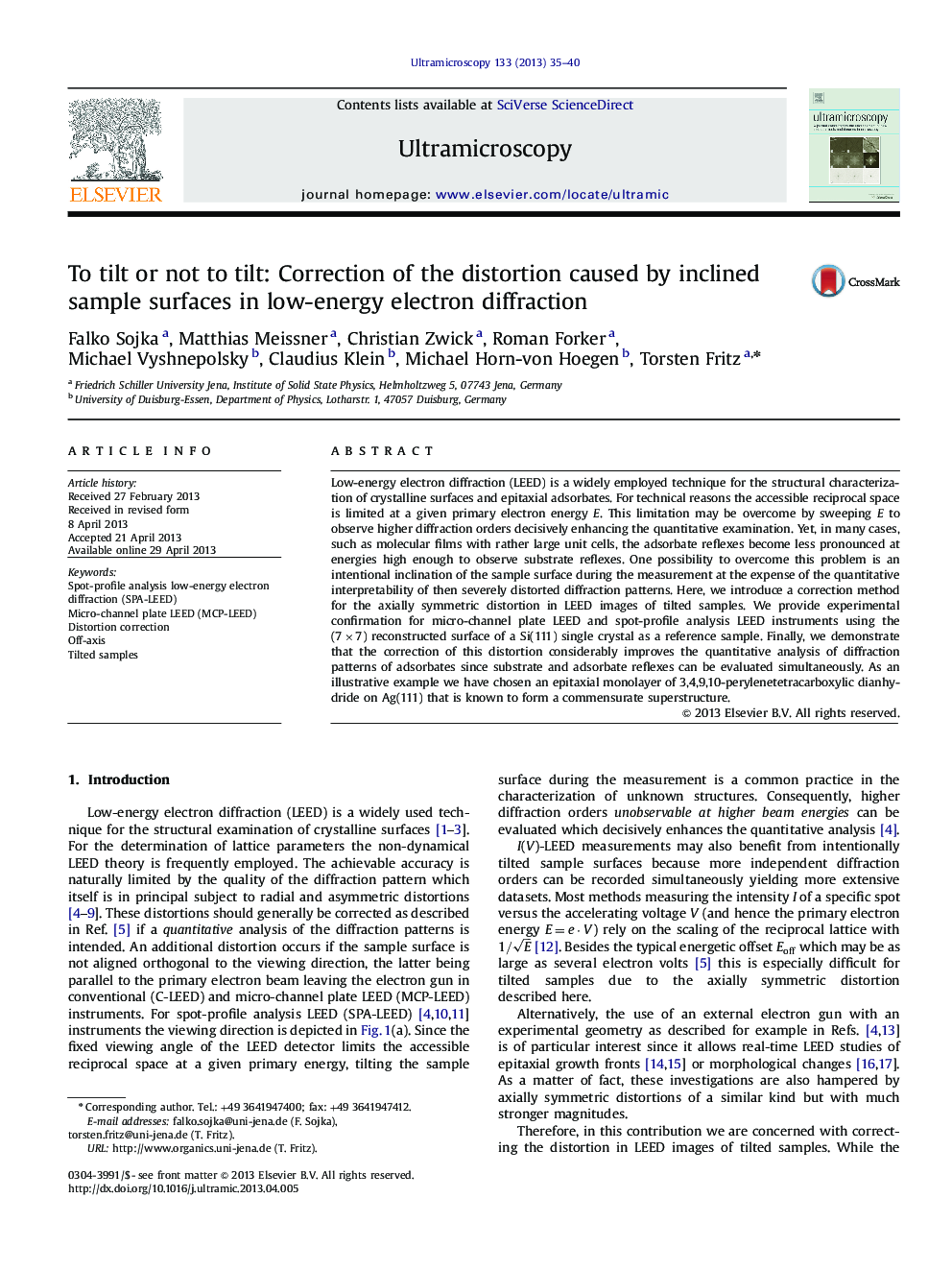| Article ID | Journal | Published Year | Pages | File Type |
|---|---|---|---|---|
| 8038496 | Ultramicroscopy | 2013 | 6 Pages |
Abstract
Low-energy electron diffraction (LEED) is a widely employed technique for the structural characterization of crystalline surfaces and epitaxial adsorbates. For technical reasons the accessible reciprocal space is limited at a given primary electron energy E. This limitation may be overcome by sweeping E to observe higher diffraction orders decisively enhancing the quantitative examination. Yet, in many cases, such as molecular films with rather large unit cells, the adsorbate reflexes become less pronounced at energies high enough to observe substrate reflexes. One possibility to overcome this problem is an intentional inclination of the sample surface during the measurement at the expense of the quantitative interpretability of then severely distorted diffraction patterns. Here, we introduce a correction method for the axially symmetric distortion in LEED images of tilted samples. We provide experimental confirmation for micro-channel plate LEED and spot-profile analysis LEED instruments using the (7Ã7) reconstructed surface of a Si(111) single crystal as a reference sample. Finally, we demonstrate that the correction of this distortion considerably improves the quantitative analysis of diffraction patterns of adsorbates since substrate and adsorbate reflexes can be evaluated simultaneously. As an illustrative example we have chosen an epitaxial monolayer of 3,4,9,10-perylenetetracarboxylic dianhydride on Ag(111) that is known to form a commensurate superstructure.
Keywords
Related Topics
Physical Sciences and Engineering
Materials Science
Nanotechnology
Authors
Falko Sojka, Matthias Meissner, Christian Zwick, Roman Forker, Michael Vyshnepolsky, Claudius Klein, Michael Horn-von Hoegen, Torsten Fritz,
